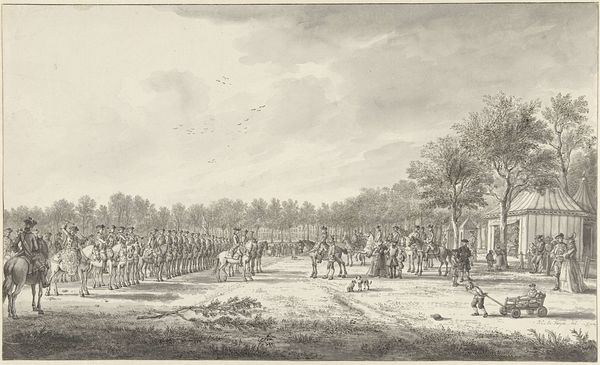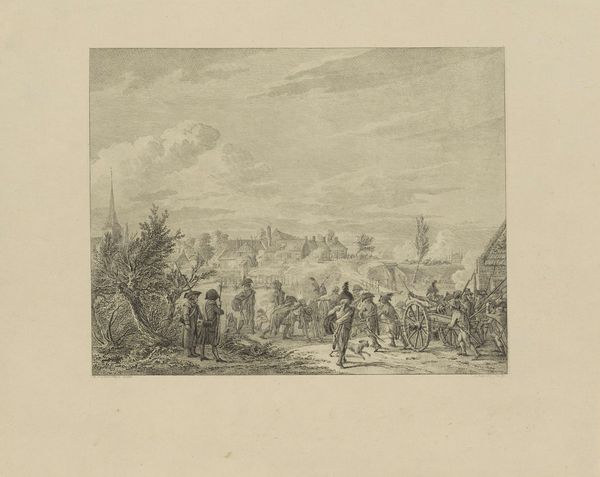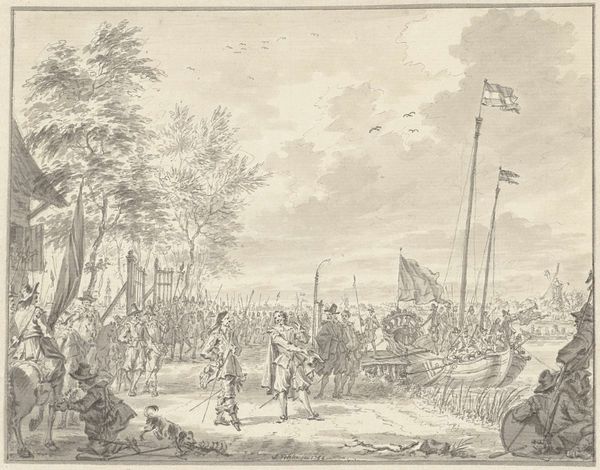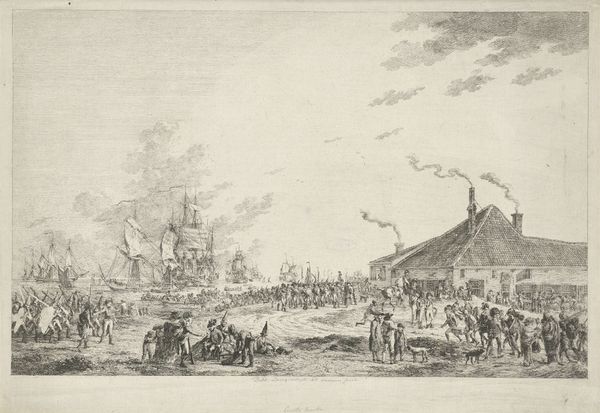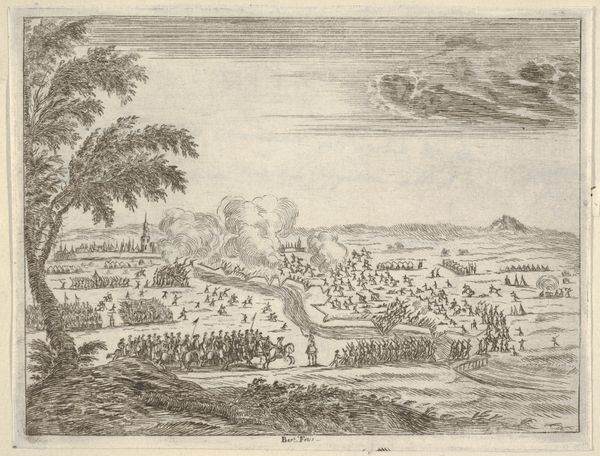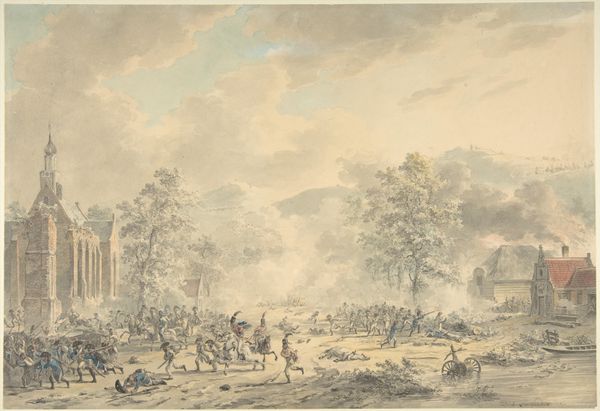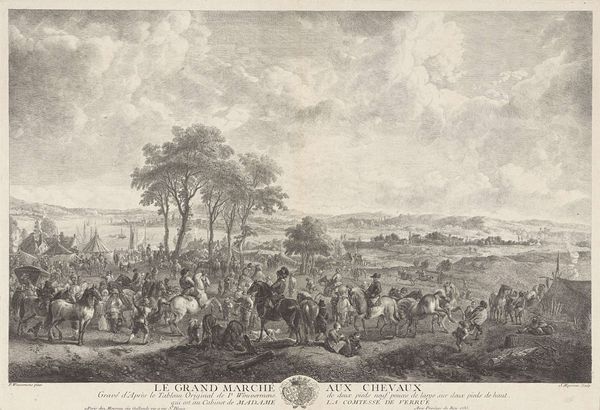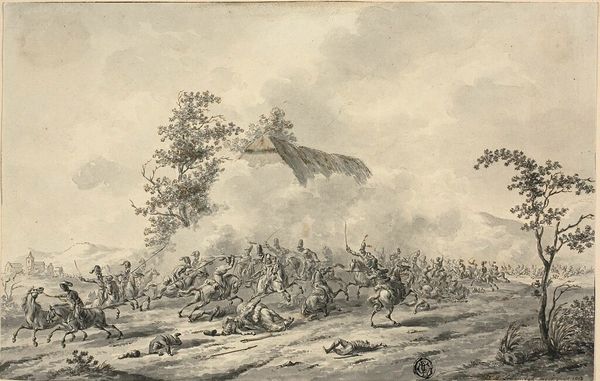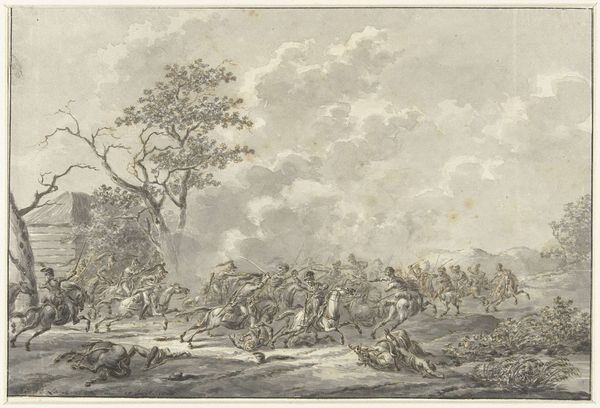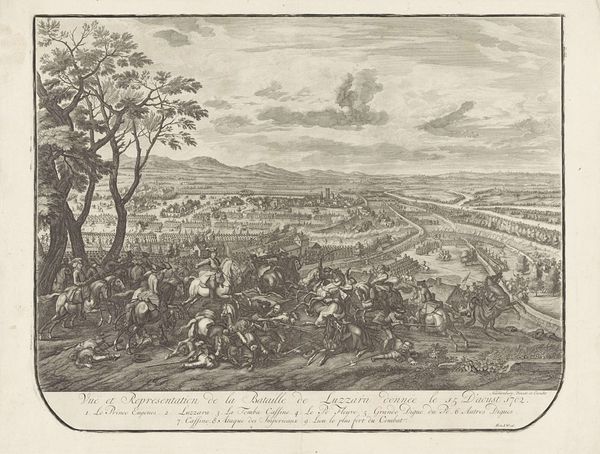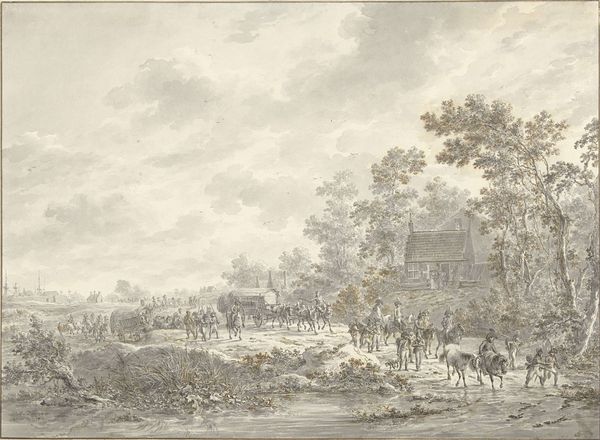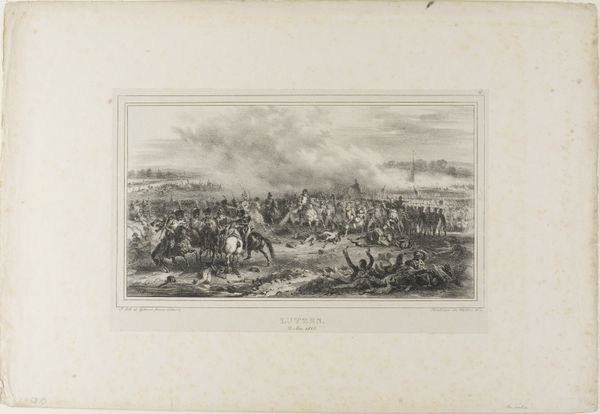
drawing, ink, pencil
#
drawing
#
neoclacissism
#
pencil sketch
#
landscape
#
ink
#
pencil
#
history-painting
Dimensions: height 257 mm, width 353 mm
Copyright: Rijks Museum: Open Domain
Curator: Before us is Dirk Langendijk's 1804 drawing, "De Schelde versterkt door de Franse troepen," housed right here at the Rijksmuseum. It is executed in pencil and ink. Editor: It gives off a washed-out, melancholic feeling. Note how the meticulous lines define space, with a classical recession into depth...yet the grayscale palette suppresses immediate emotive engagement. Curator: Langendijk created this around the time of the Napoleonic Wars. The title translates to “The Scheldt Strengthened by French Troops," alluding to the military build-up around the Scheldt River, a strategically vital waterway. Editor: Look closely—the composition reveals almost processional ordering in the rendering of troops. What I mean is: there is no central heroic figure, or much dramatic action! And yet, the subtle variations in line weight suggest a meticulous and controlled hand, almost cold in its objectivity. Curator: Indeed, we must consider the larger political theatre. Langendijk lived during a period of upheaval and shifting national alliances. His work frequently documented military actions and naval affairs. This particular drawing serves as a visual record of French imperial power being projected in Dutch territories. Editor: I agree. Consider the landscape’s horizontality in contrast to vertical elements like masts. I can decode in this tension a visual signifier of enforced calm imposed onto natural freedom, even a veiled semiotic gesture about the landscape. Curator: Perhaps the work aims at presenting history dispassionately, allowing future audiences to scrutinize and formulate their opinions on events. Note also the drawing's public role: it appeared as print too. The proliferation and availability of the print extends its historic scope of the event. Editor: So, while initially, this work seemed subdued, even monotone, upon closer formal study, we discover complexity of detail in both structure and composition that makes the piece fascinating. Curator: Yes, precisely, viewing it within its history as part of a cultural object and public image enhances this appreciation. I am left thinking about the function of imagery in shaping public perception.
Comments
No comments
Be the first to comment and join the conversation on the ultimate creative platform.
